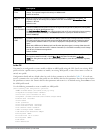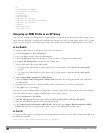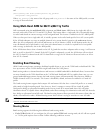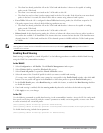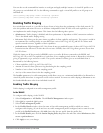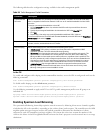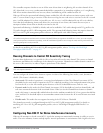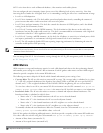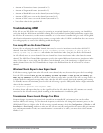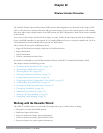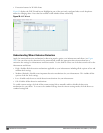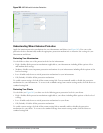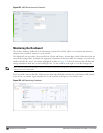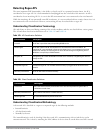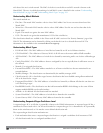
l Amount of Non-unicast frames (measured in %)
l Amount of Fragmented frames (measured in %)
l Amount of Bandwidth seen on the channel (measured in kbps)
l Amount of PHY errors seen on the channel (measured in %)
l Amount of MAC errors seen on the channel (measured in %)
l Noise floor value for the specified AP
Troubleshooting ARM
If the APs on your WLAN do not seem to be operating at an optimal channel or power setting, you should first
verify that both the ARM feature and ARM scanning have been enabled. Optimal ARM performance requires that
the APs have IP connectivity to their master controller, as it is the master controller that gives each AP the global
classification information required to keep accurate coverage index values. If ARM is enabled but does not seem to
be working properly, try some of the following troubleshooting tips.
Too many APs on the Same Channel
If many APs are selecting the same RF channel, there may be excessive interference on the other valid 802.11
channels. Issue the CLI commands show ap arm rf-summary ap-name <ap-name> or show ap arm rf-
summary ip-addr <ap ip address> and calculate the Interference index (intf_idx) for all the valid channels.
An AP will only move to a new channel if the new channel has a lower interference index value than the current
channel. The ARM Free Channel Index parameter specifies the required difference between two interference index
values. If this value is set too high, the AP will not switch channels, even if the interference is slightly lower on
another channel. Lower the Free Channel Index to improve the likelihood that the AP will switch to a better
channel.
Wireless Clients Report a Low Signal Level
If APs detect strong signals from other APs on the same channel, they may decrease their power levels accordingly.
Issue the CLI commands show ap arm rf-summary ap-name <ap-name> or show ap arm rf-summary ip-
addr <ap ip address> for all APs and check their current coverage index (
cov-idx
). If the AP’s coverage index is at
or higher than the configured coverage index value, then the APs have correctly chosen the transmit power setting.
To manually increase the minimum power level for the APs using a specific ARM profile, define a higher minimum
value with the command
rf arm-profile <profile> min-tx-power <dBm>.
If wireless clients still report that they see low signal levels for the APs, check that the AP’s antennas are correctly
connected to the AP and correctly placed according to the manufacturer’s installation guide.
Transmission Power Levels Change Too Often
Frequent changes in transmission power levels can indicate an unstable RF environment, but can also reflect
incorrect ARM or AP settings. To slow down the frequency at which the APs change their transmit power, set the
ARM Backoff Time to a higher value. If APs are using external antennas, check the Configuration > Wireless > AP
Installation > Provisioning window to make sure the APs are statically configured for the correct dBi gain, antenna
type, and antenna number. If only one external antenna is connected to its radio, you must select either antenna
number 1 or 2.
DellPowerConnectW-SeriesArubaOS6.2 | User Guide AdaptiveRadioManagement (ARM) | 362



